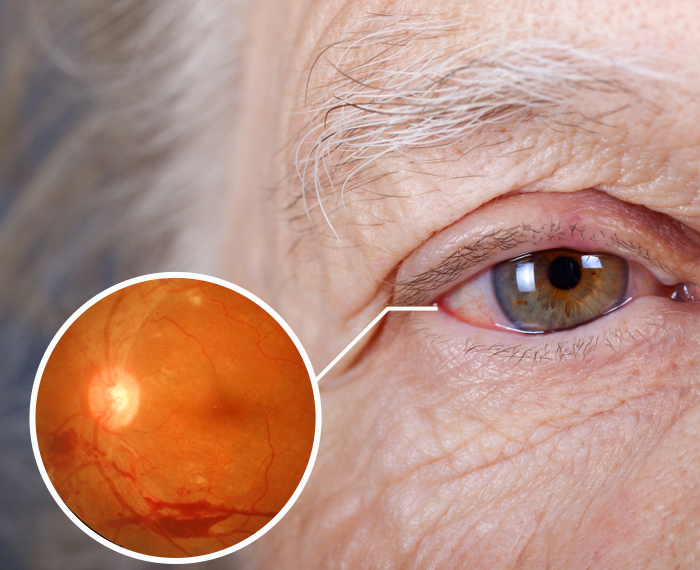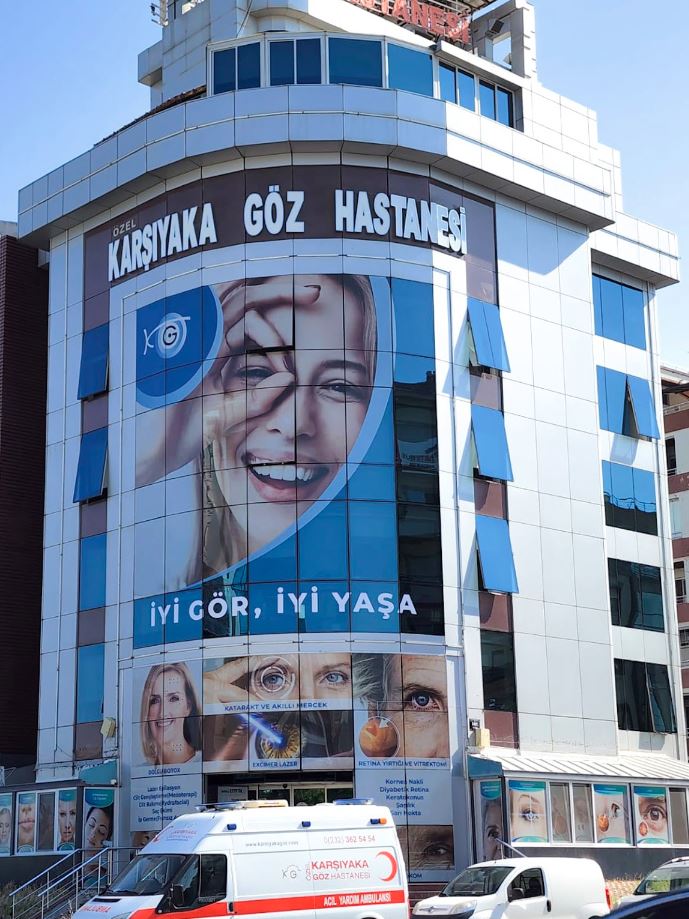
Diabetic Retiopathy
The main cause of diabetic retinopathy is diabetes. Retinopathy means damage to the thin blood vessels that feed your retina (tissues where light falls on the back of your eye). Damage to the vessels may cause blood leakage (hemorrhage). Another feature of diabetic retinopathy is that it may cause the formation of new blood vessels on the surface of the retina. These new veins bleed easily.
There are three types of diabetic retinopathy. Posterior retinopathy is the least serious to affect your vision, but it should still be monitored regularly by your GP or an ophthalmologist (ophthalmologist). In the case of pre-proliferative retinopathy, your retina swells and starts leaking blood to block your vision. In the latter type of proliferative retinopathy, your vision begins to blur because of severe bleeding, which can also cause sudden vision loss.
Symptoms
Diabetic retinopathy is completely painless but usually causes sudden blindness. This occurs because the blood vessels bleed into the vitreous gel of your eye. This is seen in your eyes as a dark curtain that prevents your vision.
After a while – sometimes weeks, sometimes months – the leaked blood may eventually absorb and improve your vision.
Other signs of diabetic retinopathy include small spots, streaks, blurred vision, poor night vision, and difficulty adapting to bright or dim light.
Severe bleeding into the vitreous gel may lead to the formation of new blood vessels and fibrous fibers. This is very serious because these fibrous fibers can contract and remove the retina – a very difficult type of retinal detachment to correct. Treatment can sometimes prevent damage, but in some cases blindness can be permanent.
After a while – sometimes weeks, sometimes months – the leaked blood may eventually absorb and improve your vision.
Other signs of diabetic retinopathy include small spots, streaks, blurred vision, poor night vision, and difficulty adapting to bright or dim light.
Severe bleeding into the vitreous gel may lead to the formation of new blood vessels and fibrous fibers. This is very serious because these fibrous fibers can contract and remove the retina – a very difficult type of retinal detachment to correct. Treatment can sometimes prevent damage, but in some cases blindness can be permanent.
Reasons
Diabetic retinopathy is caused by diabetes. If you do not control your diabetes, your risk of developing diabetic retinopathy increases.
High blood sugar or high blood pressure may cause your blood flow to increase. This causes a thickening of the membrane in your eye, thus preventing the necessary fluids from entering and exiting your retina. The damaged cells then begin to secrete special chemicals that allow the formation of new blood vessels. These new blood vessels tend to leak more fluid.
If left untreated, the growing blood vessels will start to obstruct your vision and may even cause complications within your eye.
In addition, if you have high cholesterol levels (high levels of fatty acids called triglycerides in your blood) and you are pregnant, your risk of diabetic retinopathy increases.
High blood sugar or high blood pressure may cause your blood flow to increase. This causes a thickening of the membrane in your eye, thus preventing the necessary fluids from entering and exiting your retina. The damaged cells then begin to secrete special chemicals that allow the formation of new blood vessels. These new blood vessels tend to leak more fluid.
If left untreated, the growing blood vessels will start to obstruct your vision and may even cause complications within your eye.
In addition, if you have high cholesterol levels (high levels of fatty acids called triglycerides in your blood) and you are pregnant, your risk of diabetic retinopathy increases.
Diagnosis
The diagnosis of diabetic retinopathy is made by an ophthalmologist (ophthalmologist) with an ophthalmoscope (the device with a light on the end of the eye) looking at the back of your retina.
If you have diabetes, you should have your eyes checked regularly (at least once a year) to see if there is bleeding and abnormal blood vessel formation. The earlier diabetic retinopathy is diagnosed, the greater the likelihood of treatment being effective.
The ophthalmologist may perform a procedure called fluorescent angiography. A dye is injected through your arm and the dye reaches your eye. This makes it easier to see the blood vessels in your retina and also check for torn vessels or fluid leaks.
Treatment
Diabetic retinopathy treatment varies depending on the type of disease.
You do not have to undergo any treatment for the posterior retinopathy. However, if the disease progresses, you will need to undergo regular eye examination for early detection.
If you have a pre-proliferative retinopathy, you may not be treated again. However, laser therapy may be an option if it is threatening your vision of leakage.
If you have proliferative retinopathy, laser therapy can be used to burn to prevent further growth of abnormal blood vessels. Laser treatment does not directly target blood vessels, but burns oxygen-free ones around your retina. If there is a loss of vision, it cannot improve it, but it can prevent your vision from getting worse.
In rare cases, eye surgery can be performed in case of severe bleeding in your eye. This may occur if the proliferative retinopathy is diagnosed at a late stage.
Your GP or specialist will discuss all the options with you, including the advantages and risks of laser treatment or eye surgery.
You do not have to undergo any treatment for the posterior retinopathy. However, if the disease progresses, you will need to undergo regular eye examination for early detection.
If you have a pre-proliferative retinopathy, you may not be treated again. However, laser therapy may be an option if it is threatening your vision of leakage.
If you have proliferative retinopathy, laser therapy can be used to burn to prevent further growth of abnormal blood vessels. Laser treatment does not directly target blood vessels, but burns oxygen-free ones around your retina. If there is a loss of vision, it cannot improve it, but it can prevent your vision from getting worse.
In rare cases, eye surgery can be performed in case of severe bleeding in your eye. This may occur if the proliferative retinopathy is diagnosed at a late stage.
Your GP or specialist will discuss all the options with you, including the advantages and risks of laser treatment or eye surgery.
Complications
When blood vessels grow inside your retina, they may occasionally explode or leak. This may cause complications. If you have bleeding in your eyes, you may start to see spots (vitreous bleeding). In more serious cases, the blood may fill your eyes completely, obstructing your vision. This type of bleeding does not cause permanent loss of vision and usually passes within a few weeks or a few months. Tractional retinal detachment may occur due to scarring on the back of your eye. This wound may cause part of your eye to be pushed out of its normal position. This may result in blank or blurred vision, or loss of vision in more severe cases. Neovascular glaucoma is a disease that occurs when there is abnormal blood vessel growth in your iris (the colored part of the eye that controls the incoming light). This will interrupt the normal flow of fluid to your eye, causing pressure to form inside your eye. This can cause permanent visual damage to your eye.
Protection
To prevent or slow progression from diabetic retinopathy, you may need to change some aspects of your lifestyle. Take control of your blood glucose value by keeping it as close to normal as possible. Ideally, your blood glucose level is 90-130 milligrams per deciliter (mg / dL) before meals and 180 mg / dL after meals. To achieve this, you may need to take medicines such as insulin. You also need to eat healthy and control your weight. Stop smoking, especially if you have diabetes. Smoking increases your risk of complications by narrowing your blood vessels. You also need to limit your alcohol consumption because drinking too much alcohol will increase your blood pressure (the recommended daily amount is 3-4 units for men and 2-3 units for women).









